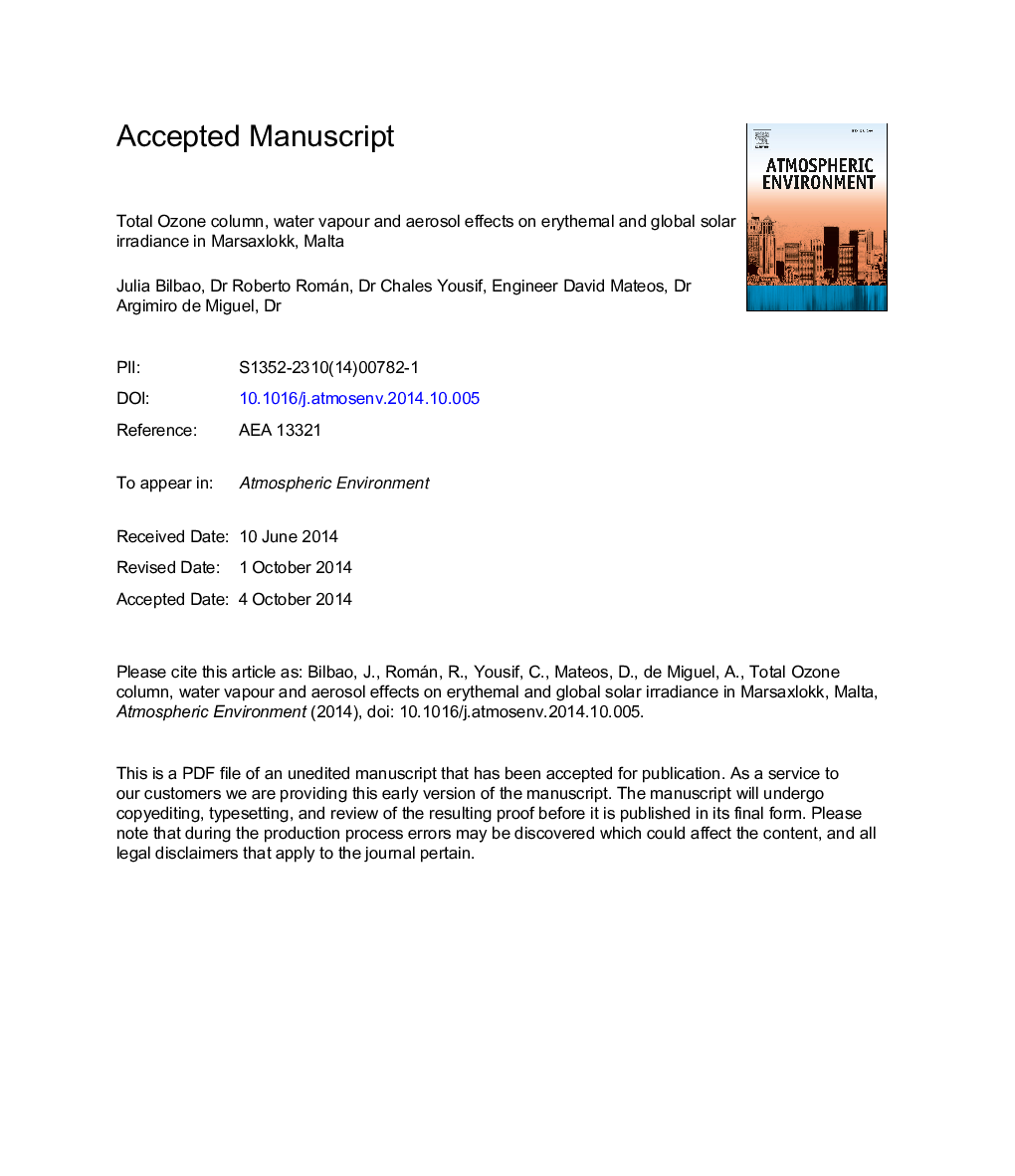| Article ID | Journal | Published Year | Pages | File Type |
|---|---|---|---|---|
| 6339176 | Atmospheric Environment | 2014 | 37 Pages |
Abstract
Observations of erythemal (UVER; 280-400Â nm) and total solar shortwave irradiance (SW; 305-2800Â nm), total ozone column (TOC), water vapour column (w), aerosol optical depth (AOD) and Ã
ngström exponent (α) were carried out at Marsaxlokk, in south-east Malta. These measurements were recorded during a measurement campaign between May and October 2012, aimed at studying the influence of atmospheric compounds on solar radiation transfer through the atmosphere. The effects of TOC, AOD and w on UVER and SW (global, diffuse and direct) irradiance were quantified using irradiance values under cloud-free conditions at different fixed solar zenith angles (SZA). Results show that UVER (but not SW) irradiance correlates well with TOC. UVER variations ranged between â0.24% DUâ1 and â0.32% DUâ1 with all changes being statistically significant. Global SW irradiance varies with water vapour column between â2.44% cmâ1 and â4.53% cmâ1, these results proving statistically significant and diminishing when SZA increases. The irradiance variations range between 42.15% cmâ1 and 20.30% cmâ1 for diffuse SW when SZA varies between 20° and 70°. The effect of aerosols on global UVER is stronger than on global SW. Aerosols cause a UVER reduction of between 28.12% and 52.41% and a global SW reduction between 13.46% and 41.41% per AOD550 unit. Empirical results show that solar position plays a determinant role, that there is a negligible effect of ozone on SW radiation, and stronger attenuation by aerosol particles in UVER radiation.
Related Topics
Physical Sciences and Engineering
Earth and Planetary Sciences
Atmospheric Science
Authors
Julia Bilbao, Roberto Román, Charles Yousif, David Mateos, Argimiro de Miguel,
